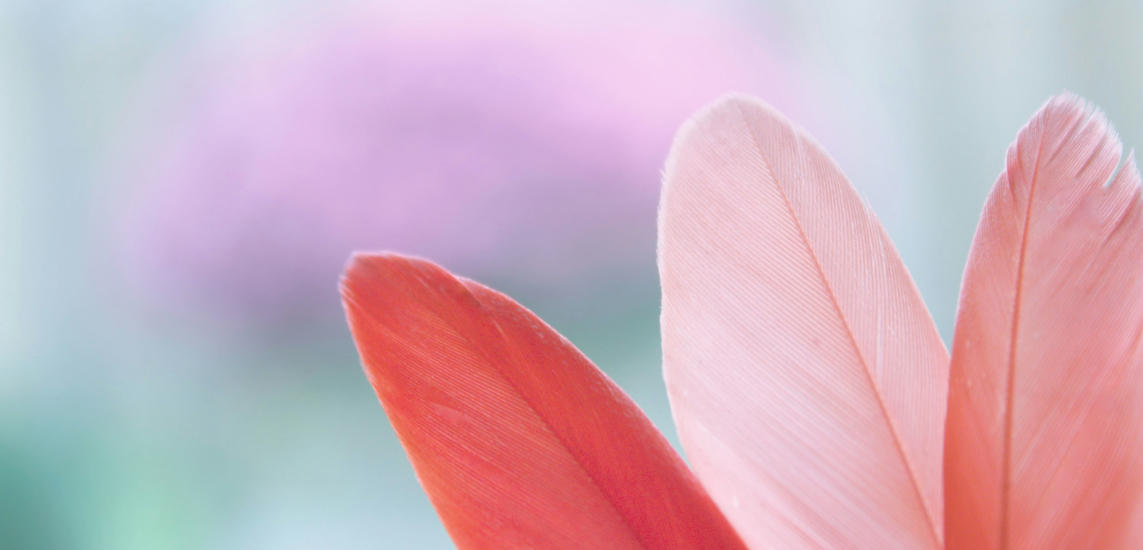Ask any yoga teacher, and they’ll tell you that savasana, also known as corpse pose, is an important pose for any yogi — from beginner to experienced. Corpse pose allows us to integrate the gains and wisdom of our yoga practice through deep mind-body relaxation.
Beyond being a simple relaxation pose, savasana is a meditative posture that restores and revitalizes the entire body. It acts as a restful bridge to quiet our mind after our yoga practice and before heading back into the demands of our day.
This article explores savasana’s meaning, the benefits of the corpse pose, and how to practice savasana for optimal wellness.
Key takeaways
- Savasana, Sanskrit for corpse pose, is the final resting pose of most yoga routines, meant to unwind the mind and body into deep relaxation.
- This state of rest allows our whole body to adjust to and integrate the benefits of the previous yoga poses.
- The wellness benefits of savasana include stress reduction, lower blood pressure, activating the parasympathetic nervous system, and access to deeper states of consciousness.
- There are methods we can employ to support our savasana practice, some of which help to enhance the benefits we receive from corpse pose.
- The Insight Timer app provides free and easy access to thousands of guided meditation and yoga practice videos for all skill levels
What is savasana? The meaning of corpse pose in yoga
Savasana (a Sanskrit word pronounced shuh-VAH-suh-nuh) is a resting pose where we lie on our back, fully relaxed, while extending our arms and legs. The goal of this pose is to release all tension in each part of the body. As a final resting pose, savasana is the only asana (yoga pose) included in every sequence.
Savasana is a whole-body activity as it unites all areas of our body in a state of rest. It begins with the slow relaxation of the entire body, one part at a time, muscle by muscle. Then, we release our thoughts by allowing them to come up without pursuing or trying to prevent them — we practice open awareness.
If you’re in a hurry, the free Insight Timer App has thousands of yoga and meditation walk-throughs, including guided savasana sessions you can do from home!

How to practice the savasana pose
As corpse pose is considered a final resting meditation, savasana should be the last step of your yoga practice. The following steps will help you get into the savasana pose correctly and relax deeply.
- Lay on your back and close your eyes: At the end of your yoga practice, lie down on your yoga mat, facing the sky. Extend your legs and let your feet fall apart naturally. Let your arms relax at your sides where comfortable with your palms turned upward.
- Soften your lower back and tuck your tailbone: Keep your lower back relaxed and slightly lift your pelvis to tuck your tailbone. Then lower back down to the mat.
- Lengthen your neck: Lengthen the back of your neck by tucking your chin slightly toward your chest without tensioning your neck muscles.
- Relax with a body scan: Focus on the toes of each foot, working your way up your legs, knees, hips, and pelvis. Relax your fingertips, traveling up your arms into your shoulders. Finally, relax your stomach, back, chest, and neck. Relax any tension in your jaw and forehead. With your whole body in deep relaxation, let your body melt into the mat.
- Meditate: Release the yoga practice you’re recovering from, letting your body be exactly where it is. Watch your thoughts arise, letting go of the past. Avoid dwelling on future plans and embrace the unknown. Surrender, accept, and welcome simply being where you are.
- Breathe deeply: Take three to five full deep breaths to release tension, then return to a natural breathing pattern.
Stay in savasana for five to 15 minutes, depending on how long and intense your yoga practice is. Observe your thoughts without chasing, identifying with, or taking credit for them. Accept the thought as simply a thought and let it dissolve on its own, including any anxious thoughts about moving the body.
More savasana tips: Enhance your corpse pose
Here are methods yoga teachers teach for enhancing the benefits of savasana and supporting your practice.
Support yourself from the start
Adjust your hair, clothes, or mat as needed to get comfortable enough to relax before you continue. Bend your knees slightly if necessary, ensuring your legs are relaxed. Feel free to use props like a pillow for better support for your neck or knees, or a blanket if you get chilly.
Those with lower back pain can practice savasana with a folded blanket under their knees, allowing the lower back to lie flat. A more extreme modification includes resting with knees bent and feet rooted on the ground. Turning our toes inward allows the knees to rest against each other naturally.
If you have difficulty relaxing your neck, you can also use a blanket to support your head and keep your neck relaxed yet extended. Still can’t relax your neck? Check out Insight Timer for guided meditations, yoga practice, and desk-stretching techniques that target your neck and shoulders.
Need help relaxing more generally? Insight Timer App has resources for meditators of all levels — everything from a broad library of relaxation meditations to helpful tips on resting and relaxing eye tension.
- Shavasana - A Practice Of Resting Thoughts & Feelings Kerry Brennan 11:26
- Crystal Singing Bowl & Piano to Energize Heart Chakra Claudio Senna Venzke 7:21
- Deep Relaxation - Brave Restorative Savasana (Guided) Radha Brave 9:53
- Savasana Crickets (Music) Tina Lear 5:44
- Guided Shavasana Lawrence Conlan 9:26
- Ong Namo (Chanting) Carrie Grossman 7:11
- Body Scan for Sleep or Savasana (Guided) Laura Trimble-Thompson 5:01
- Toning (Music) Cheryl Chaffee 7:37
Exit corpse pose using the fetal position
Once your timer goes off, slowly wiggle your fingers and toes. Stretch your arms overhead and stretch your legs and feet like you’ve just woken up for the first time. Roll to your right, keeping your heart above the rest of your organs to help the blood flow. Pause in the fetal position, reflecting on rebirth before lifting yourself using your hands and forearms into a seated position.
Bow your forehead to the mat
With your hands on your heart, touch your third-eye chakra to the mat and thank yourself, your teacher, or your fellow yoga students. Some studios and classes say “namaste” at the end of a class, a Sanskrit word recognizing the divine light in all creation.
Why do we practice savasana? The benefits of corpse pose in yoga
The benefits of regular savasana practice include reduced stress, increased focus, full-body recovery, and a reduced fear of death. Let’s take a closer look at the specific benefits of corpse pose in yoga.
Strengthen, stretch, and lengthen the body
As a restorative yoga pose, savasana gives the whole body a chance to relax, recover, and release tension from its deep tissue layers.
Research shows that corpse pose aids in lowering blood pressure, with a lower heart rate of study participants for up to 35 minutes after the relaxation exercise. Participants with high blood pressure (hypertensive) and those with typical blood pressure (normotensive) were impacted in the same way.
Reduce stress
Regular corpse pose practice can optimize our well-being by promoting stress reduction and parasympathetic nervous system (rest-and-digest system) activation. Studies show that by engaging the rest-and-digest arm of our nervous systems with deep relaxation, savasana dampens the stress response, even past the yoga class itself.
A study by Mysore’s National Journal of Basic Medical Sciences demonstrated that regular savasana practice decreases the resting heart rate and activates the parasympathetic system. Savasana practitioners are thus less likely to reach peak stress in their lives.
Improve well-being
Participating in a regular savasana practice helps with grounding and supporting ourselves when we’re in anxious spirals or depressed. Calming the body and detaching from our thoughts helps to focus our awareness.
Closing your eyes and doing a body scan is like a workout for your mind — the more often you do it, the stronger your focus will be in daily life.
Reduce our fear of death
Savasana is alternatively referred to as mrtasana or death pose. It is the practice of death, and the more we practice, the more we realize how peaceful non-existence truly is. The death referred to here is the death of the ego.
By surrendering our minds to non-action, corpse pose practices the death of all craving and grasping toward anything outside of us for happiness. In savasana, we practice recognizing that everything is perfect exactly as it is. There’s nothing left to do.
Read through thousands of resources on the Insight Timer App for more on how yoga postures, or asanas, have the power to help us attain the main goal of yoga.
Build a healthy savasana routine
The stressors of modern life make a decompression practice like savasana ideal for improving mental and physical well-being. But like all healing yoga practices and meditation techniques, the stressors that make savasana necessary leave little time in our schedules for a session at the yoga studio.
The free Insight Timer app provides access to over 18,000 of the world’s leading teachers. Access 200,000+ free resources, guided meditations, and a growing community of like-minded individuals exploring their spiritual paths at home or on the go!
Maybe you’re just beginning to consider a savasana yoga practice, or maybe you’re seeking to deepen your understanding of corpse pose even further. Either way, the Insight Timer resource library offers a wealth of knowledge to guide and enrich your inner exploration of the deepest, most blissful states of being.
FAQs about savasana (corpse pose)
Is savasana (corpse pose) the hardest yoga pose?
Asana yoga teachers call it the most difficult pose because of the subtle struggle of savasana to disidentify from the rushing mind while doing nothing. As its name implies, the corpse pose confronts us with our fears of doing nothing, death, and non-existence.
Is it OK to sleep during savasana?
As a death meditation, savasana is the practice of surrendering. So, if our mind-body wants to sleep, we accept where we are and let it happen. We can use the growing mind-body awareness to replace distraction. Eventually, we can make time to get the rest we need elsewhere to keep our minds observant during savasana. Alternatively, supported savasana practices like yoga nidra can bring us to the state of consciousness between waking and sleeping.
What is the difference between savasana and shavasana?
Savsana refers to the restorative yoga pose done at the end of a yoga class by laying on your yoga mat in stillness. While “shavasana” is the correct pronunciation of the Sanskrit word for corpse pose, the common spelling of the English translation is “savasana.”
What is the meaning of savasana?
“Sava” or “shava” means corpse, and “asana” translates to pose, position, or posture. Put together, they form the word savasana, meaning corpse pose, as it refers to the final resting pose yogis use to achieve deep relaxation.
Disclaimer: This article is for information only and should not be considered as medical advice. If you have concerns about anxiety or any other conditions mentioned in this article, please seek a medical professional for help.
References:
- Gotink, R. A., Meijboom, R., Vernooij, M. W., Smits, M., & Hunink, M. G. (2016). 8-week Mindfulness Based Stress Reduction induces brain changes similar to traditional long-term meditation practice – A systematic review. Brain and cognition, 108, 32–41. https://doi.org/10.1016/j.bandc.2016.07.001
- Kiecolt-Glaser, J. K., Christian, L., Preston, H., Houts, C. R., Malarkey, W. B., Emery, C. F., & Glaser, R. (2010). Stress, inflammation, and yoga practice. Psychosomatic medicine, 72(2), 113–121. https://doi.org/10.1097/PSY.0b013e3181cb9377
- Orme-Johnson, D. W., & Barnes, V. A. (2014). Effects of the transcendental meditation technique on trait anxiety: a meta-analysis of randomized controlled trials. Journal of alternative and complementary medicine (New York, N.Y.), 20(5), 330–341. https://doi.org/10.1089/acm.2013.0204
- KasturiK, K. (2016). THE EFFECT OF SHAVASANA ON CARDIOVASCULAR PARASYMPATHETIC FUNCTIONS IN HEALTHY ADULTS. https://www.semanticscholar.org/paper/THE-EFFECT-OF-SHAVASANA-ON-CARDIOVASCULAR-FUNCTIONS-KASTURI.K./92eefd53d108ba0158e697bf33db6122e8d75089?p2df
- Santaella, D. F., Lorenzi-Filho, G., Rodrigues, M. R., Tinucci, T., Malinauskas, A. P., Mion‐Junior, D., Montano, N., & Forjaz, C. L. M. (2014). Yoga Relaxation (savasana) decreases cardiac sympathovagal balance in hypertensive patients. Medical Express, 1(5). https://doi.org/10.5935/medicalexpress.2014.05.04








